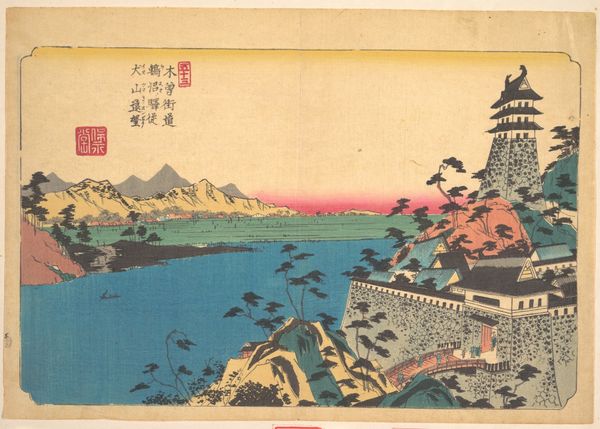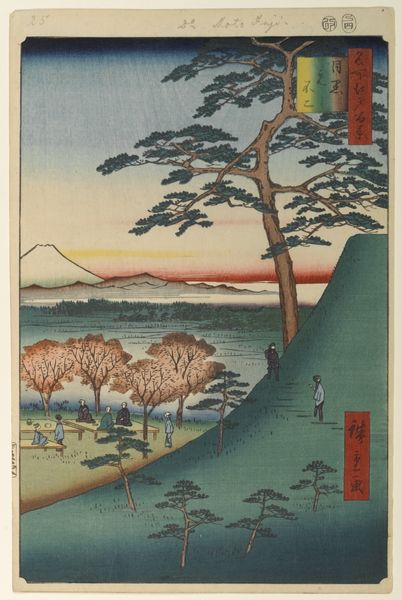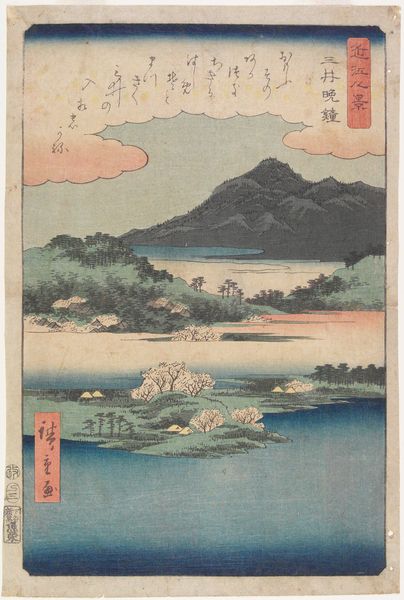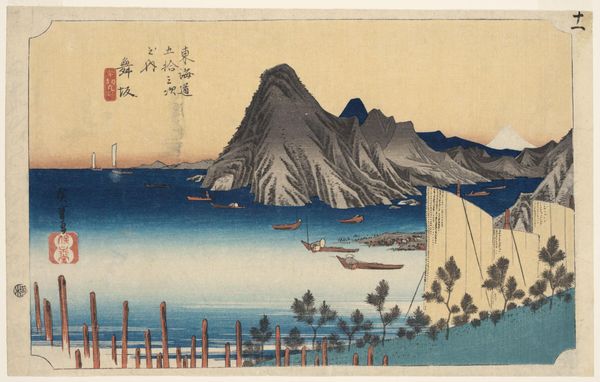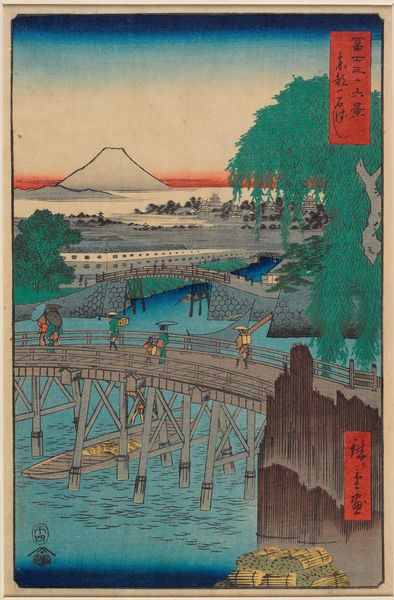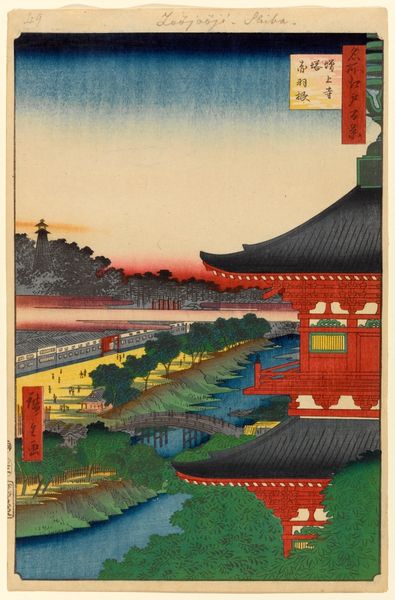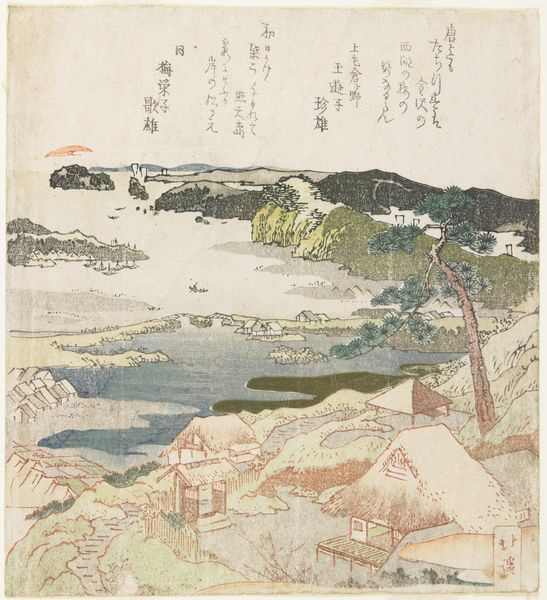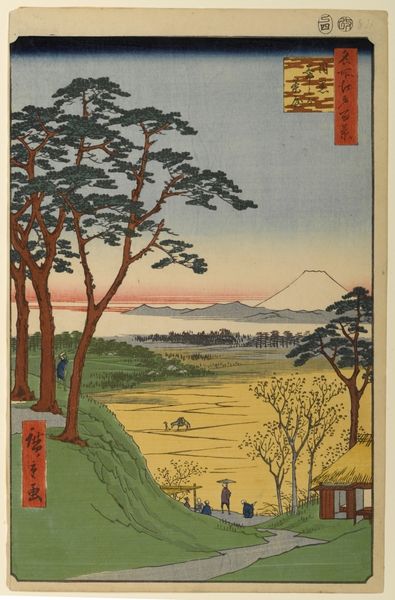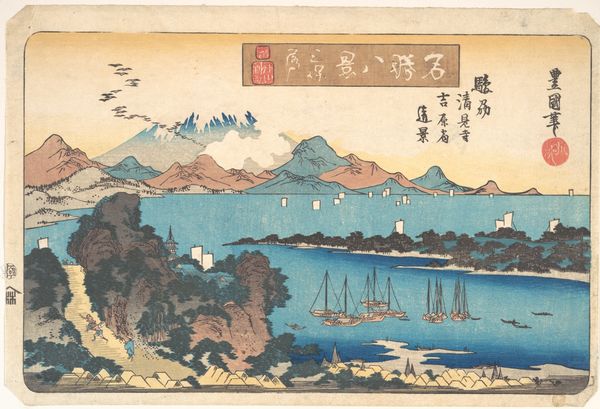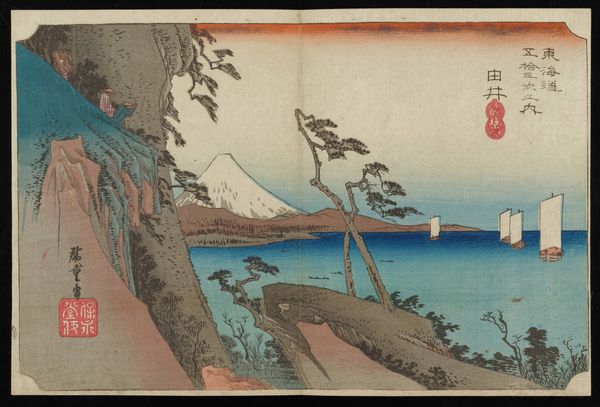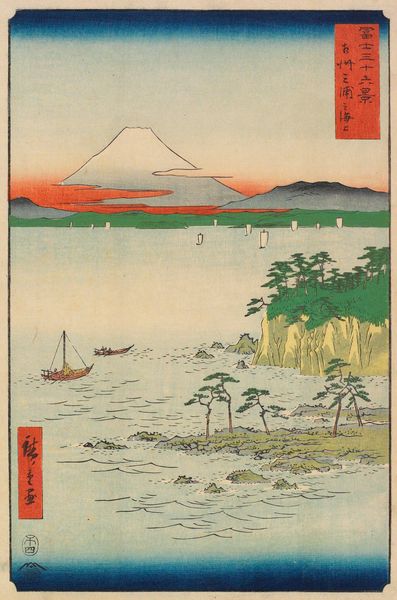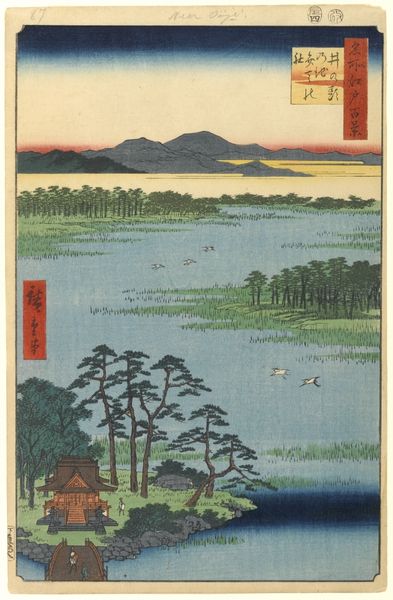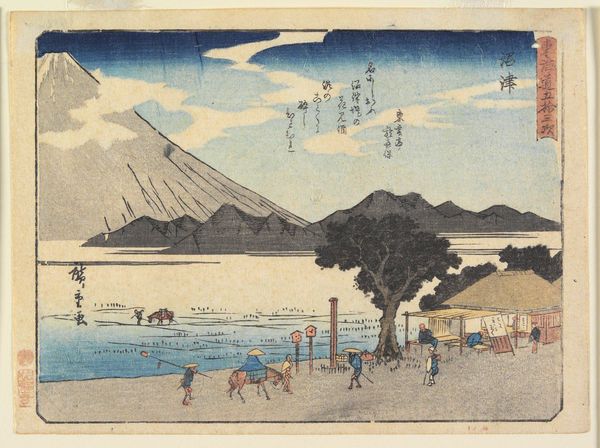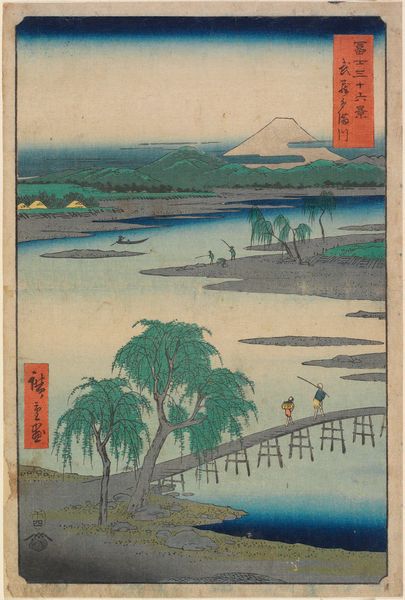
Dawn over Mout Fuji and Susaki, from the series "Five Views of Mount Fuji (Fuji goban no uchi)" c. 1827 - 1829
0:00
0:00
print, woodblock-print
# print
#
asian-art
#
landscape
#
ukiyo-e
#
woodblock-print
Dimensions: 20.9 × 18.3 cm (8 1/4 × 7 3/16 in.)
Copyright: Public Domain
Editor: So, this woodblock print, "Dawn over Mount Fuji and Susaki" by Utagawa Kuniyoshi, from around 1827-1829, is part of the “Five Views of Mount Fuji” series. I find the layered composition and muted color palette quite striking, it's almost dreamlike. What grabs your attention when you look at this work? Curator: Well, immediately I think about the process itself, the labour involved in creating this Ukiyo-e print. Consider the multiple woodblocks that would have been required, each meticulously carved and then carefully aligned to layer the colors. Editor: Absolutely, the precision is amazing. Were there distinct artisan roles involved in carving and printing back then? Curator: Precisely. Ukiyo-e production was a collaborative process: an artist creating the design, a carver transferring that design to woodblocks, and then a printer who skillfully applied ink and pressure to produce the final image. Furthermore, there’s the socio-economic aspect of the print market itself – these were mass-produced images available to a wide audience, unlike traditional painting. This makes one think of a shift in cultural consumption happening at that time. Editor: I see your point. It democratizes art. And, what about the depiction of nature and daily life – were there any commercial factors in play? Curator: Yes. Nature, Mount Fuji in this instance, has spiritual significance. Everyday life connects the consumers with known activities, creating interest to have the art in their spaces. The production line itself is a significant social factor. Editor: That makes a lot of sense. Thinking about the hands involved and the socio-economic aspect really opens up a whole new perspective. I was focused on the aesthetic qualities, but I realize there's so much more depth to it when you consider the entire system of creation and consumption. Curator: Exactly. Analyzing the material conditions of its creation and the audience it served provides a richer and far more comprehensive understanding of its artistic value.
Comments
No comments
Be the first to comment and join the conversation on the ultimate creative platform.
